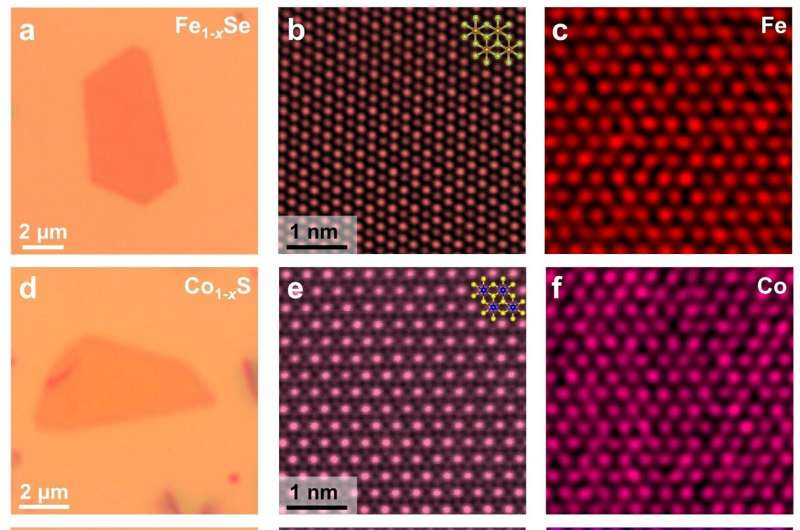Researchers developed a universal dual metal precursor method to grow non-layered 2D materials

Two-dimensional transition metal chalcogenides (2D TMCs) have drawn great interest due to their abundant material choices and possible use in many areas like electronics and optoelectronics. As a complement to the widely-studied layered TMCs (e.g., MoS2), non-layered TMCs are unique. They exhibit unsaturated dangling bonds on the surface and strong intralayer and interlayer bonding.
So far—limited by established preparation methods—the investigations of these non-layered TMC materials mainly remained on bulks or polycrystalline films, hindering the exploration of their physical characteristic and properties at the 2D thickness limit. In a recent paper published in Science Bulletin, a group led by Profs. Bilu Liu and Hui-Ming Cheng from Tsinghua-Berkeley Shenzhen Institute (TBSI) of Tsinghua University and Profs. Junhao Lin and Yue Zhao of Southern University of Science and Technology have developed a novel dual-metal precursors method, which realizes the controllable growth of various non-layered 2D TMCs, including Fe1-xS, Fe1-xSe, Co1-xS, Cr1-xS, and V1-xS.
In this dual metal growth method, the mixture of low-melting-point metal chloride and the corresponding high-melting-point metal powder was used as the dual-metal precursors. During the gas-phase reaction process, the evaporation rate was well controlled to provide a constant metal source feed and facilitate the growth of non-layered 2D TMCs with thin thickness. Taking hexagonal Fe1–xS as an example, the thickness is down to 3 nm with a lateral size up to >100 μm.
Thanks to the ultrathin nature and flat surface of the obtained flakes, the structure and transport behaviors of Fe1-xS at the 2D thickness limit were measured at the first time. Advanced microscopy inspections revreal that intrinsic ordered cation vacancies exist in the non-layered TMC family. In stark contrast, anion vacancies (S, Se, and Te) are well-known dominant point defects in common layered TMCs like MoS2. Low-temperature transport measurements and theoretical calculations reveal that 2D Fe1–xS is a semiconductor with a narrow bandgap of 20–60 meV. Compared to other narrow bandgap 2D materials like 1T'-MoTe2 and black phosphorus, 2D Fe1–xS shows better air stability and thermal stability. This work essentially solves the problem of growing ultrathin non-layered materials, and thus provides material basis for both fundamental study and applications of these emerging family of non-layered 2D materials.
More information: Junyang Tan et al, Dual-metal precursors for the universal growth of non-layered 2D transition metal chalcogenides with ordered cation vacancies, Science Bulletin (2022). DOI: 10.1016/j.scib.2022.06.022
Provided by Science China Press





















